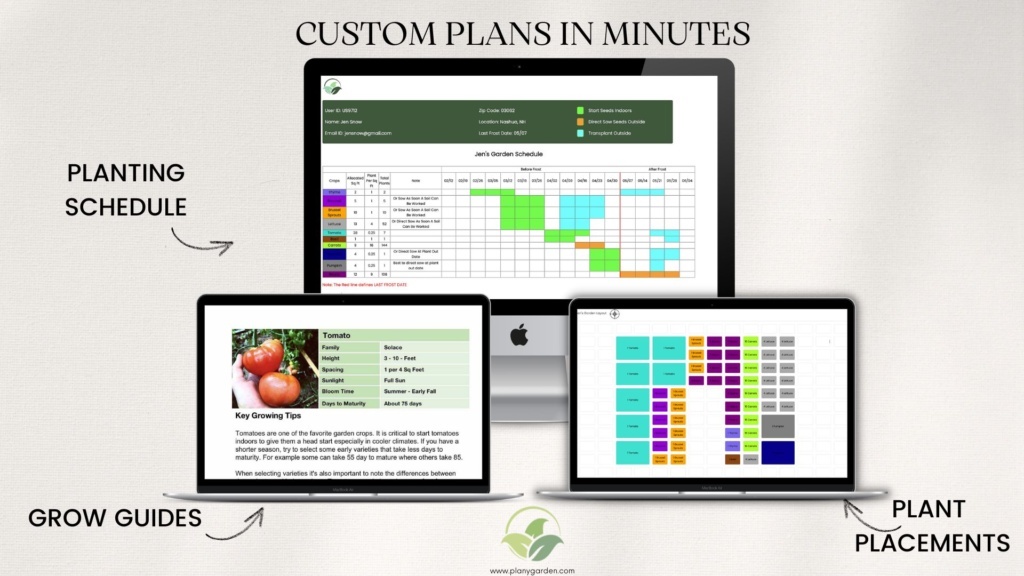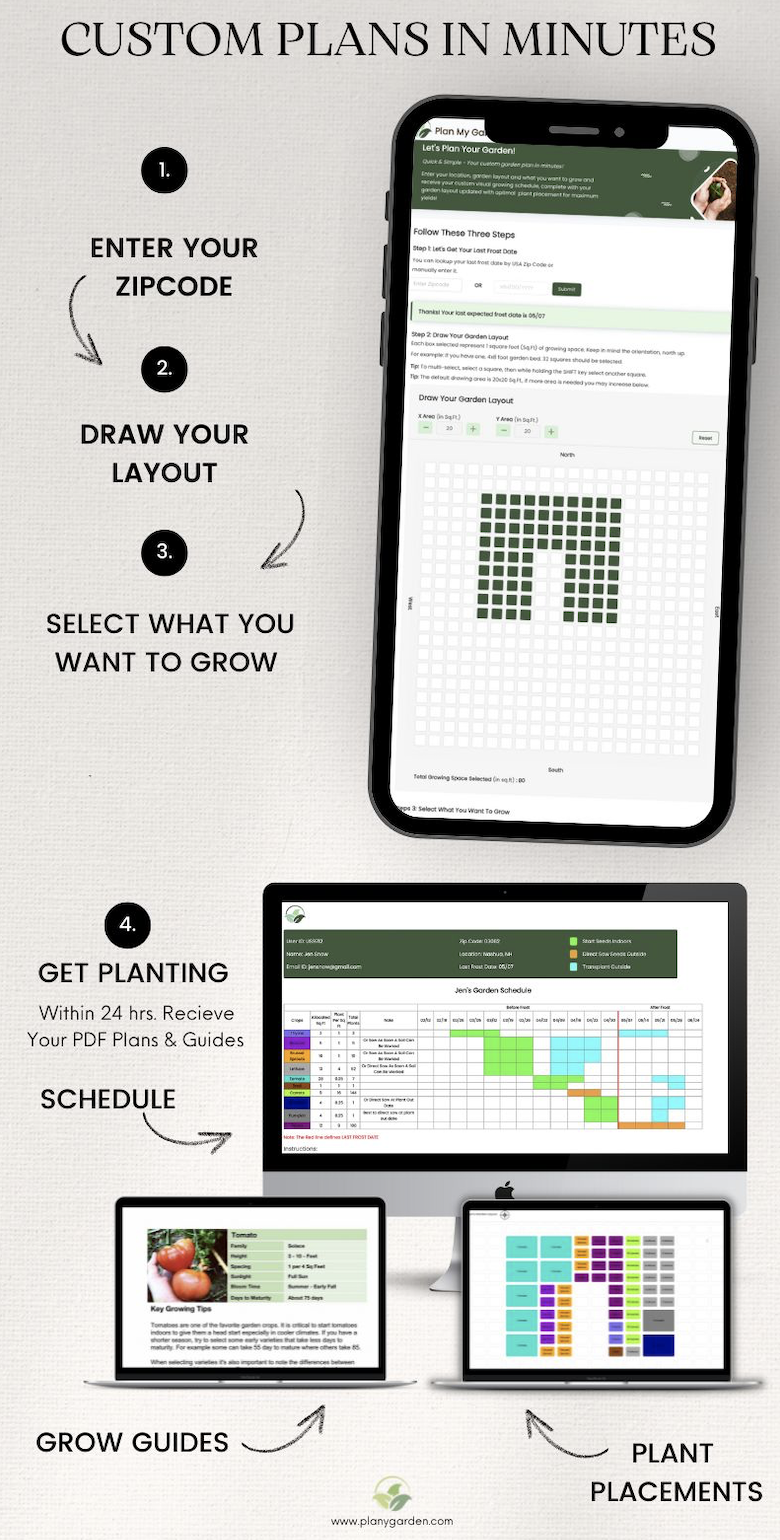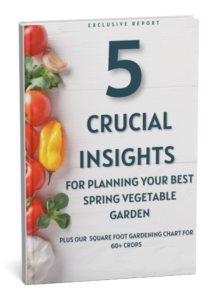Last Updated on August 25, 2023
How To Grow Peppers From Seed Organically With Massive Yields – Pepper Growing Tips
If you’re looking to learn how to grow peppers from seed in your garden that produce massive yields then look no further. In this article, you’ll learn how to grow peppers from seed organically, with step-by-step instructions from planting the seeds to enjoying the harvest. With these tips and tricks, you can have an abundant pepper harvest in no time.
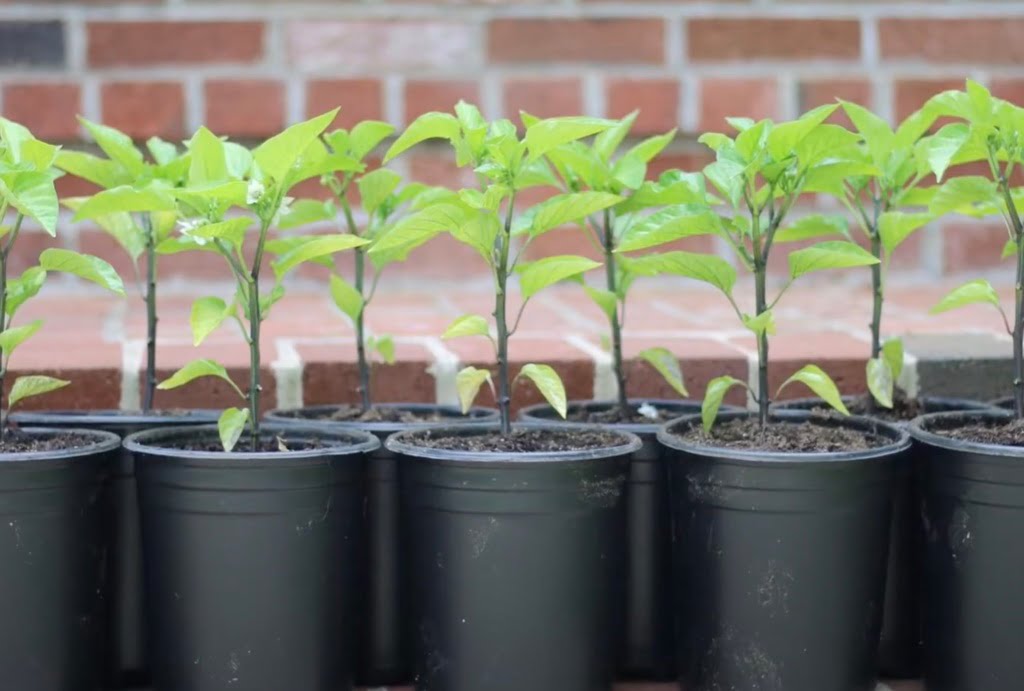
Step 1: How To Grow Peppers From Seed – Start Peppers Indoors
Start peppers indoors approximately 6-8 weeks before your last frost. Fill extra deep two-and-a-half-inch wide cell packs with your favorite potting soil. I use the Organic Potting Soil Black Gold for the seeds to germinate. It’s important that the soil stays between 70-85°F, so you may want to use a simple heat mat to ensure they stay warm until germination. This should take about 5-6 days. See our seed germination chart here for optimal temperatures for many common plants.
Step 2: Give Seedlings Lots of Light
Once the seedlings have developed their true leaves, provide them with a low-dose organic liquid fertilizer. I use Organic Neptune Fish and Seaweed fertilizer. At about 4 weeks, I’ll up-pot them into a larger cup. I use four-inch cups. At 6 weeks, if the weather is still cool, I’ll up-pot them again. I use a one-gallon container, allowing them more growth time inside.

Step 3: Transplant Peppers Into the Garden
In the photo above the seedlings are 8 weeks old. They are just starting to bud and begin to flower, which is a sign that they should be in the garden soon.
Harden off the peppers by gradually introducing them to outdoor conditions for 7-10 days before transplanting them to the garden, avoid direct sun initially for the first day or so of hardening off. This will reduce transplantation shock.
When planting peppers outdoors, be sure to add some compost to the soil. The compost will provide the additional nutrients and provide them with a nutrient-rich environment for growing.
Garden Spacing For Peppers
Dig a hole twice as wide and at the same depth as the root ball of the pepper. Place peppers at 1 per square foot of garden space, so if you have a 4’x4′ bed, 16 peppers could be grown comfortably. See our Square Foot Gardening Chart here for more details on plant placement.
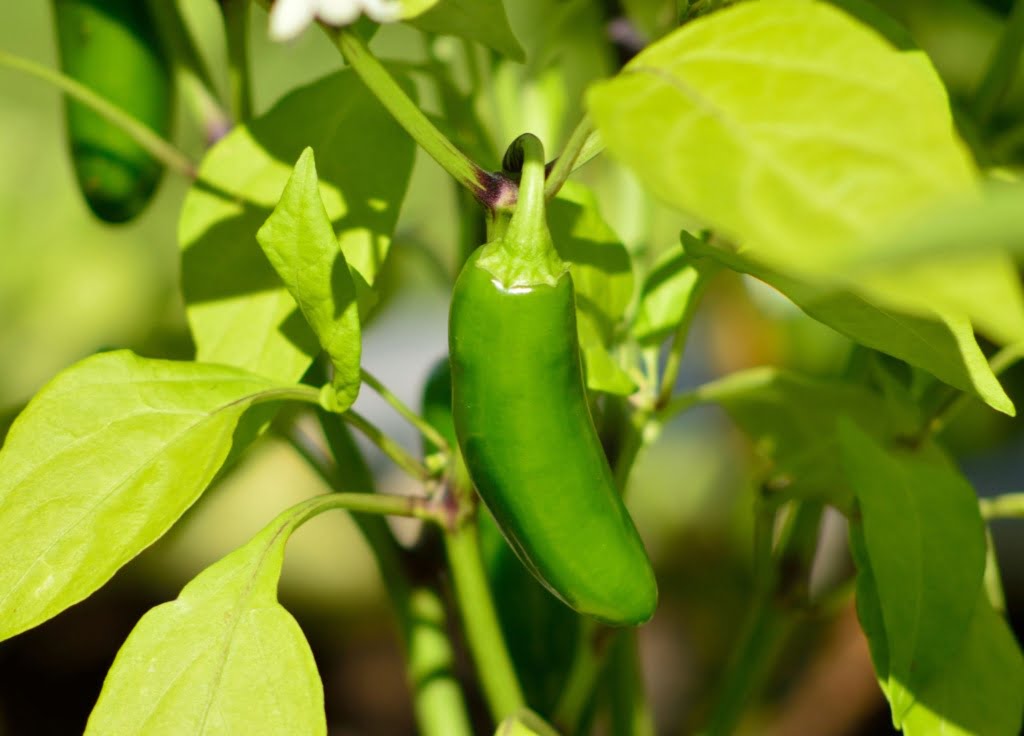
Watering & Pruning
Water regularly. Peppers need 1-2 inches of water per week. It’s also a good idea to prune the bottom leaves leaving a gap of 6 – 8 inches between the ground and the bottom leaves. Bottom pruning helps promote air circulation – This will help reduce the risk of disease.
Step 4 Harvest Peppers Regular To Promote Production
Once the peppers are ready to be harvested, make sure to pick them at the right time for the best flavor. For sweet peppers, wait until they are fully mature, but for hot peppers, you can harvest them just as they begin to turn color. Harvest regularly. Picking peppers when they are ripe will encourage more production.
Enjoy your peppers fresh or use them in your favorite recipes. Growing peppers from seed is a great way to get a big harvest and enjoy organic, homegrown peppers. Just remember to start the peppers indoors 6-8 weeks before your last expected frost, give them lots of light and warmth, and be sure to up-pot them at least once. By following these simple tips I hope you have learned how to grow peppers from seed.
Where to Buy Pepper Seeds
High Mowing Seed has a huge selection of Organic Pepper Seeds and is our #1 recommended seed supplier.

Common Problems When Growing Peppers from Seed
- Blossom End Rot: Caused by lack of water and calcium in the soil. Solution: Water regularly and add calcium to the soil.
- Poor Fruit Set: Caused by cool temperatures or lack of pollinators. Solution: Plant in warmer temperatures or hand-pollinate.
- Insects and Pests: Caused by aphids, beetles, or caterpillars. Solution: Use organic insecticides or hand-pick pests.
- Poor Germination: can be caused by lack of water, too much water, or overly warm or cool soil. Solution: ensure soil remains just moist, make sure the soil is not too warm, and start peppers indoors in a container to ensure better germination rates. The optimal temperature is 65 – 75F.
- Yellow leaves: This can be caused by a number of things, including nutrient deficiencies, underwatering, and overwatering. The solution is to ensure the pepper plants are getting enough water, and it’s best to be growing them in soil with lots of organic matter and amended with organic compost. It is common for leaves to look slightly pale after transplanting – they will spruce up. You can give them a little Organic Neptune Fish and Seaweed fertilizer.
What Are Some Common Peppers Grown in a Home Garden From Seed?
- Bell Pepper: Bell peppers are sweet and mild pepper that come in a variety of colors, including green, red, yellow, and orange. They are a great addition to any vegetable garden.
- Cayenne Pepper: Cayenne peppers are a popular hot pepper variety that are commonly used in spicy dishes. They have a bright red color and a distinct flavor.
- Jalapeno Pepper: Jalapeno peppers are medium-hot pepper that have a distinct flavor. They are often used in Mexican dishes and are also popular for pickling.
- Habanero Pepper: Habanero peppers are a very hot pepper commonly used in Caribbean dishes. They have a bright orange color and a fruity flavor.
- Anaheim Pepper: Anaheim peppers are a mild chili pepper that are often used in Mexican dishes. They are usually green, but can also be red.
- Poblano Pepper: Poblano peppers are mild-medium chili peppers that are usually used in Mexican dishes. They have a deep green color and a mild flavor.
- Banana Pepper: Banana peppers are a sweet pepper variety that are often used in salads and sandwiches. They are usually yellow or green in color and have a mild flavor.
“No occupation is so delightful to me as the culture of the earth, no culture comparable to that of the garden.”
~ Thomas Jefferson
Need help planning your square-foot garden? No problem – we’re here to help.
Ready to plan your square-foot garden in minutes? With our easy-to-use tool, you can enter your zip code, draw your layout, and choose the plants you want to grow. We’ll send you a custom visual schedule, getting started guide, and plant layout specifically tailored to your square foot garden. Plus, you’ll receive a growing guide for each vegetable to help you get the most out of your garden. Don’t wait – get your custom square-foot garden plan today and start growing!
